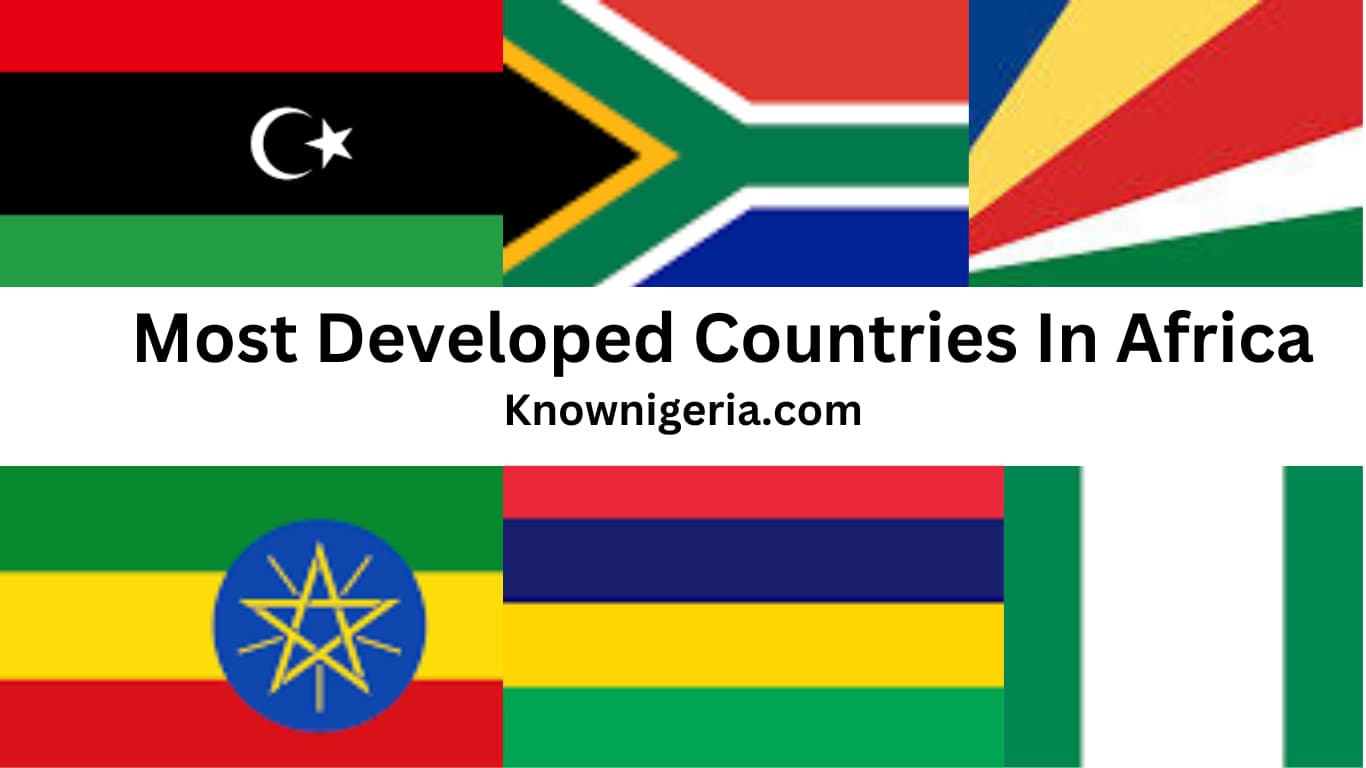As our economic bedrock and Nigeria’s former capital city, Lagos has its fair share of museums, but not all of them are worth visiting. A museum visit is only fun when there are archeological, historical, or art pieces to observe, and sometimes a combination of the three.
If a museum visit is the next item on your bucket list, Lagos has got you covered. This article will explore the six best museums in Lagos you can visit today, some information about the listed museums, and how much it would cost you to enter.
Table of Contents
6 Best Museums in Lagos to Visit
As far as museums go, here are the six best Lagos State has to offer residents and tourists, in no particular order.
1. Badagry Heritage Museum

A visit to Badagry Black Heritage Museum is an essential part of your search for the best museum in Lagos, as it’s one of the oldest and most popular museums across Lagos state, and perhaps Nigeria.
The museum is located in the former Badagry District Officer’s Office originally built by the British Government back in 1863, and it exists to show the history and impact of the precolonial slave trade to visitors. Most items in the museum are linked to the pre-slavery abolition era in Badagry, making it an essential cultural heritage site for Nigeria as a whole.
While the building that now houses the museum was originally constructed back in 1863, it did not become a museum until August 22, 2002, the day of the Badagry Black Heritage Festival. The Badagry Heritage Museum in Lagos is government-owned and run by the Nigerian Cultural Commission, albeit terribly.
Badagry Heritage Museum has eight sections known as ‘galleries’, and each gallery tells a different story. The first gallery introduces people to Badagry’s history and culture; the second, dubbed ‘The Capture’ shows the instruments used in capturing slaves within Nigeria; and the third, also known as ‘Transportation’ depicts how the British transported captured slaves outside Nigeria.
The fourth shows the equipment and currencies used during the slave trade era and is aptly named ‘The Equipment’; the fifth presents how rebellious slaves are punished; the sixth details how the slave trade industry works generally; the seventh explores how slaves are integrated into their new environment; and the eighth honors heroes who fought for the abolition of the slave trade.
Despite the importance of the Badagry Heritage Museum to our tourism industry, locals continue to decry its poor state due to its abandonment by the government. Entry to this museum costs N500 for both locals and tourists, and visitors generally have many good things to say about it after visiting.
2. Nigerian National Museum

The Nigerian National Museum in Lagos is often depicted as the country’s official national museum, probably because there isn’t any in the capital city, Abuja. While Kenneth Murray founded the museum in 1957, architectural plans for a national museum have been in the works since the late 1940s.
The museum is located at Onikan on Lagos Island, and it houses a vast and essential collection of Nigerian art. Unlike the Badagry Heritage Museum, which aims to tell the story of the slave trade era, the Nigerian National Museum’s primary objective is to preserve Nigeria’s historical artifacts.
Among the most popular historical artifacts present at the Nigerian National Museum at Onikan is the Jema’a Head, one of the oldest terracotta artifacts of Nok Culture. The museum also has a gigantic ‘Jollof’ pot on wheels; an image that’d hit very close to home for most Nigerians.
The insanely popular Benin Ivory Mask also resides in the museum, as well as Egungun costumes to represent Yoruba culture. You can also find the car in which General Murtala Mohammed was assassinated in the museum, among other essential historical items.
A visit to the museum costs locals N200 and foreigners N300, which is pretty ridiculous by modern standards.
An interesting fact about the Nigerian National Museum in Lagos is that you don’t have to visit it physically to observe its amazing collection. There’s a digital adaptation on Google Street View and Google Arts and Culture that shows you its monuments using hyperrealistic 360° images.
3. Yemisi Shyllon Museum of Art

The Yemisi Shyllon Museum of Art in Lagos is reputed to be the first university art museum in Nigeria, located on the main campus of Pan-Atlantic University along the Lekki-Ekpe Expressway in Lagos. As the name implies, it’s an art-focused museum that collects historical sculptures and artwork from the precolonial era to the present.
The museum is named after Dr. Yemisi Adedoyin Shyllon, a prominent art collector with the largest art collection of any private individual in Nigeria, amounting to over 7,000 paintings, sculptures, and other art pieces. His collection also includes over 55,000 photographs of cultural festivals across Nigeria.
Dr. Yemisi’s impressive collection made it possible for him to donate 1,000 artworks from his personal collection to the library upon its establishment, making him the Grand Donor and Museum Chairman. The gesture also inspired the decision to name the museum after him.
Among the most popular items in the museum’s collection are an Ife head bronze sculpture, a collection of wood carvings, and several Afikpo masks used by the indigenous Afikpo people of Ebonyi state. The museum also contains cultural pieces from the kingdoms of Benin and Ife, as well as religious pieces from Nigerian traditional religions like Ifa divination trays.
Despite the museum’s insane popularity, especially among art lovers in Lagos state, it may be surprising to learn that the museum only opened in October 2019. As a private museum, it’s open to both local and foreign observers, and visitors have to pay a N2,000 entry fee to access the art museum in Lagos.
4. Kalakuta Republic Museum

The Kalakuta Republic Museum in Ikeja, Lagos is the same three-story building that housed Fela Kuti, his family, and his band members, and also served as his recording studio during his embattled lifetime.
‘Kalakuta’ is a mockery of the name ‘Calcutta’, referring to a popular prison cell where the famous musician did jail time, and the ‘Republic’ part of the name indicates that the building was self-governing and independent from Nigeria’s corrupt military system, with him as president.
Efforts to rebuild and convert the Kalakuta Republic building into a museum began in 2012 by the government of then-Governor Babatunde Fashola. By October 15, 2012, the museum would open to commemorate the legend’s 74th birthday. The facilities in Kalakuta Republic Museum include the building itself, a restaurant, and a hotel.
The most essential part of the museum is Fela’s bedroom, which has remained the same since his death, untouched and untidied. It contains a few clothing materials belonging to the music legend, his mattress, a rumpled bedsheet or bedspread, pillows, and his saxophone.
While the museum is a fun place to be, it’s not the best for someone who isn’t exactly a fan of Abami Eda (Fela Kuti). There isn’t much to see apart from items he used during his lifetime, and if you’re hoping to learn a bit about Nigeria’s history and culture, you probably want to be somewhere else.
There’s no fixed fee for visiting the museum in Lagos; how much you pay depends on the strength of your bargaining skills. On average, you’re paying around N1,000 – N5,000 for entry into the Kalakuta Republic, a fair price, considering Nigeria’s economic outlook.
5. Freedom Park Museum
Freedom Park is one of the most popular recreational centers in the heart of Lagos, but it also happens to include a museum for its historical significance. For the unaware, the location of the modern-day Freedom Park used to house a colonial prison named Her Majesty’s Broad Street Prison.
Since the museum is only a part of the larger Freedom Park attraction, you want to check out all sections of the park and not just the museum during a visit. Freedom Park boasts of a serene environment on the outside, and the inside hosts 4 by 8 feet box prison cells that hold prisoners and another section for executing condemned inmates.
The first floor of the Freedom Park Museum building is the main part of the museum that aims to capture the ‘Spirit of Prisons’ to visitors. Its overall structure and design try to mimic the original prison, and it contains the original materials used in the prison or by prisoners for administration and labor, respectively.
On the other hand, the ground floor is simply an empty space that’s sometimes used for art seminars, exhibitions, and workshops, among others. Entry to the Freedom Park Museum costs N200, which is fair, as it’s one of the most well-maintained public museums in Lagos.
6. Nike Art Gallery

Nike Art Gallery is not traditionally a museum, but its significance to Nigeria’s art industry makes it a common entrant in lists of the best museums in Lagos to visit. The gallery is located in a five-story building in Nike Art Gallery Road, Lekki Phase I, Lagos.
The museum is owned and named after Madam Nike Monica Okundaye, a popular batik and adire textile designer, painter, weaver, and embroiderer. Born in Ogidi, Ogun State, Madam Nike quickly developed a passion for textile making, as it was the most popular profession in her hometown.
As you can already expect from the name, the Nike Art Gallery is a full four floors of exquisite Nigerian art, collected from different artists, and representing different parts of the Nigerian culture.
The gallery is open every day of the week, and is accessible to all tourists and observers without a gate fee! Yes, you don’t need to pay a dime to enter the art gallery and observe the different exquisite works of art on display.
However, the art gallery offers a course for passionate art lovers to learn different handicrafts, including adire and batik designing, painting, embroidering, carving, and weaving. You can also purchase art pieces from the gallery, with prices ranging from a few thousand naira to hundreds of thousands.

Conclusion
There are several museums in Lagos today, but most are either in a state of disrepair or are simply too uninspiring to deserve a visit. To help you create a memorable museum visit, we have curated a list of the six best museums in Lagos to visit today for an enjoyable experience and everlasting memories.
Faq
How much is the entrance fee for the National Museum in Lagos?
Surprisingly, the entrance fee for the Nigerian National Museum in Lagos is N200 for locals and N300 for international visitors. While it’s not in the best of shape, it’s one of the few fun areas in the state you can visit that cheaply.
Where is the Biggest Museum in Nigeria Located?
Nigeria National Museum is famed as the biggest in the country, and as expected, it’s located in the city of Lagos. It’s very cheap to enter and it boasts of a huge collection of Nigerian cultural and art pieces.
If you like the content we bring to you, we know you will also love the awesome content we put out on our YouTube channel, TikTok, Facebook, Instagram, and Twitter. Please subscribe and follow us for more Know Nigeria content.










